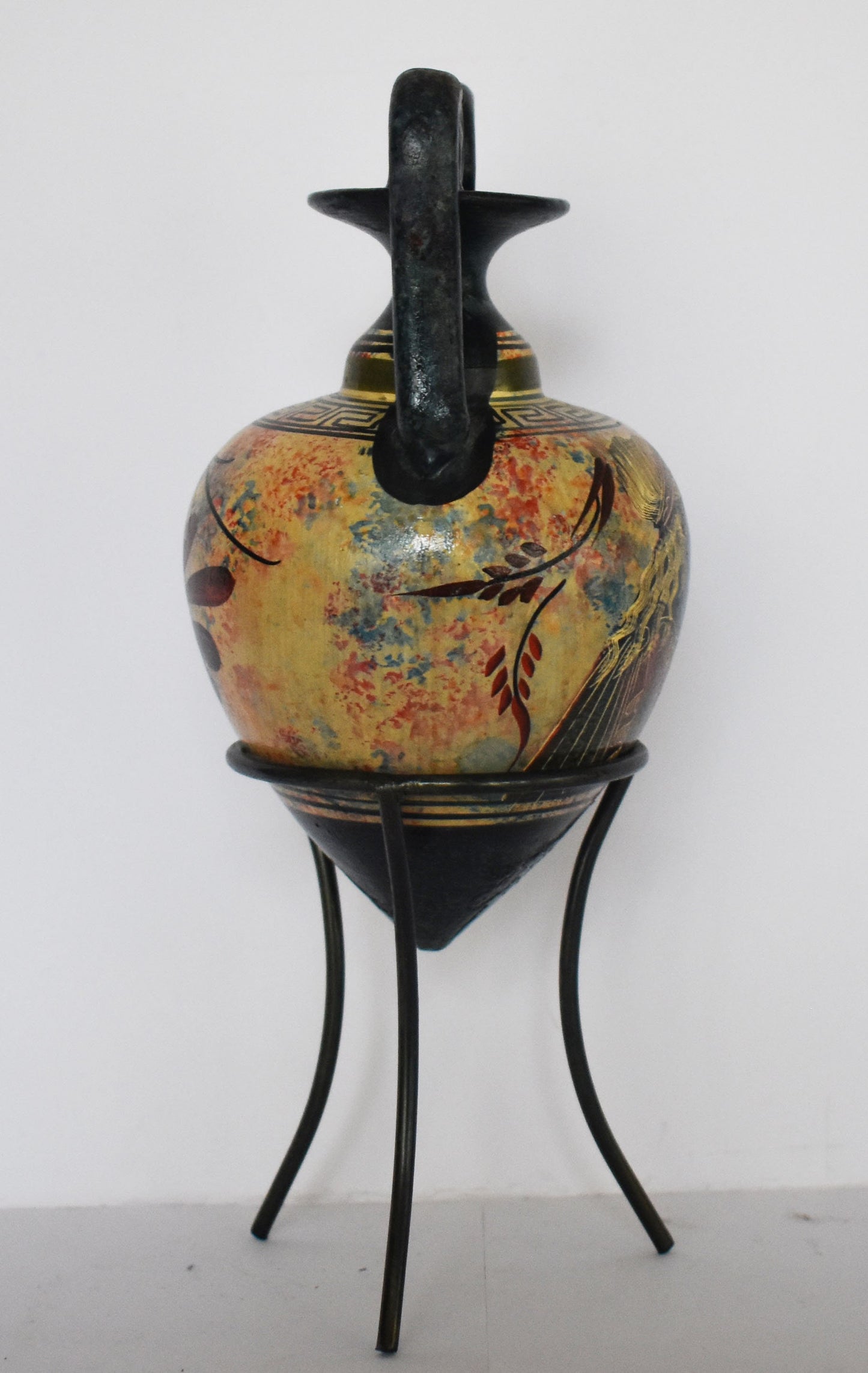Gallery Demeter
Rhyton from Greece - Vessel for Libations or Drinking - Aphrodite Venus - Meander and Floral design - Ceramic Vase
Rhyton from Greece - Vessel for Libations or Drinking - Aphrodite Venus - Meander and Floral design - Ceramic Vase
Regular price
€39,90 EUR
Regular price
Sale price
€39,90 EUR
Unit price
per
Tax included.
Shipping calculated at checkout.
Couldn't load pickup availability
Item Specifics
Handmade in Greece
Height: 16 cm - 6,3 inches
With Base: 21 cm - 9,1 inches
Width: 9 cm - 3,5 inches
Length: 9 cm - 3,5 inches
Weight: 280 g
A rhyton is a roughly conical container from which fluids were intended to be drunk or to be poured in some ceremony such as libation, or merely at table. They are typically formed in the shape of an animal's head, and were produced over large areas of ancient Eurasia, especially from Persia to the Balkans. Many have an opening at the bottom through which the liquid fell; others did not, and were merely used as drinking cups, with the characteristic that they could not usually be set down on a surface without spilling their contents.
The English word rhyton originates in the ancient Greek word ῥυτόν (rhy̆tón or rhŭtón). The conical rhyton form has been known in the Aegean region since the Bronze Age, or the 2nd millennium BC. However, it was by no means confined to that region. Similar in form to, and perhaps originating from, the drinking horn, it has been widespread over Eurasia since prehistoric times.







